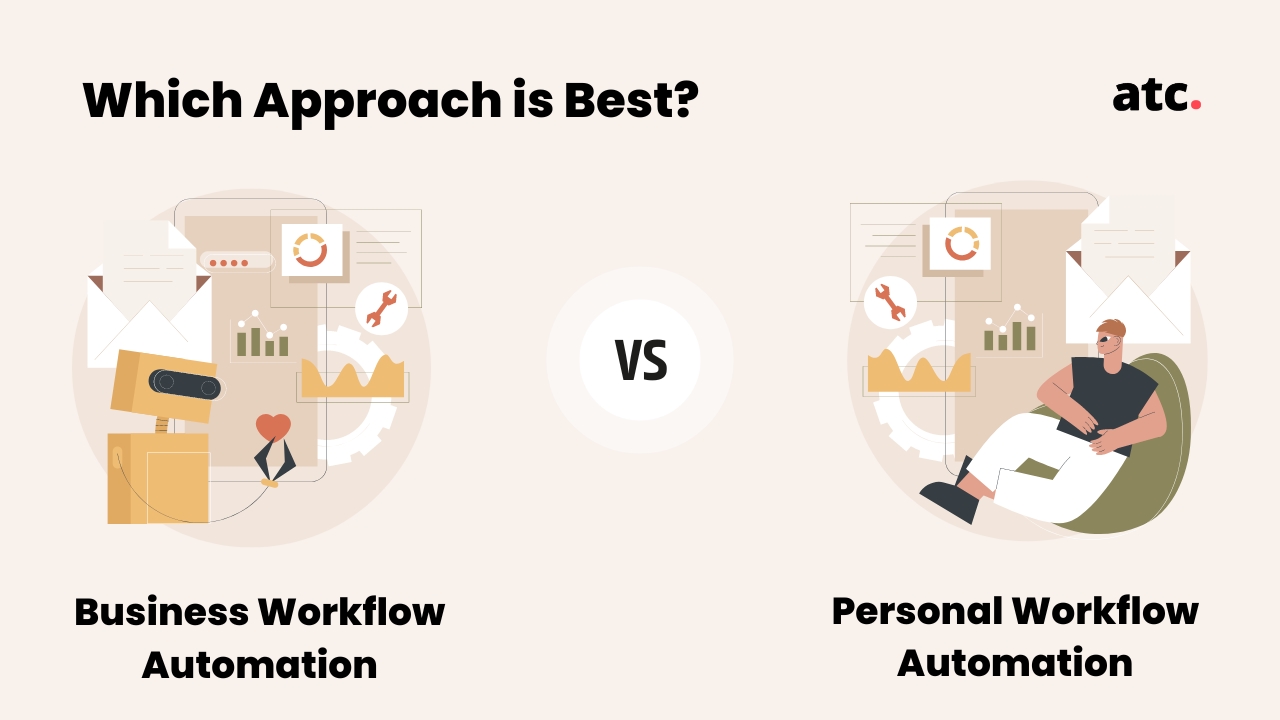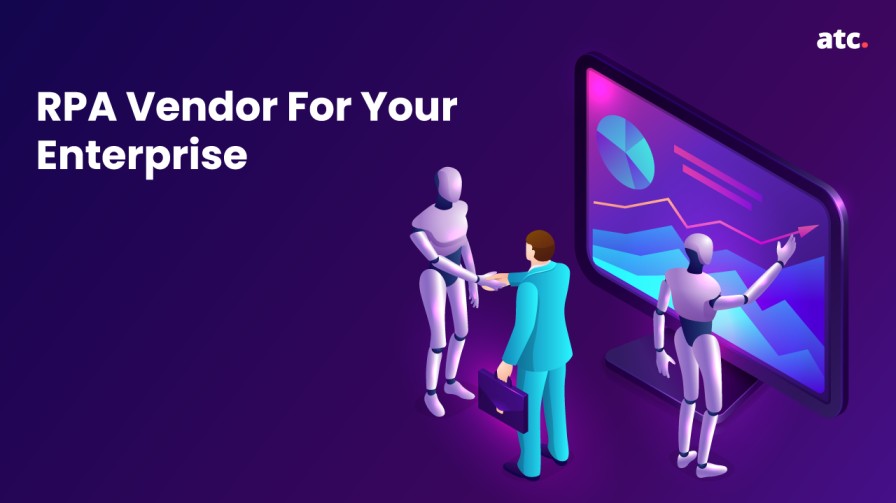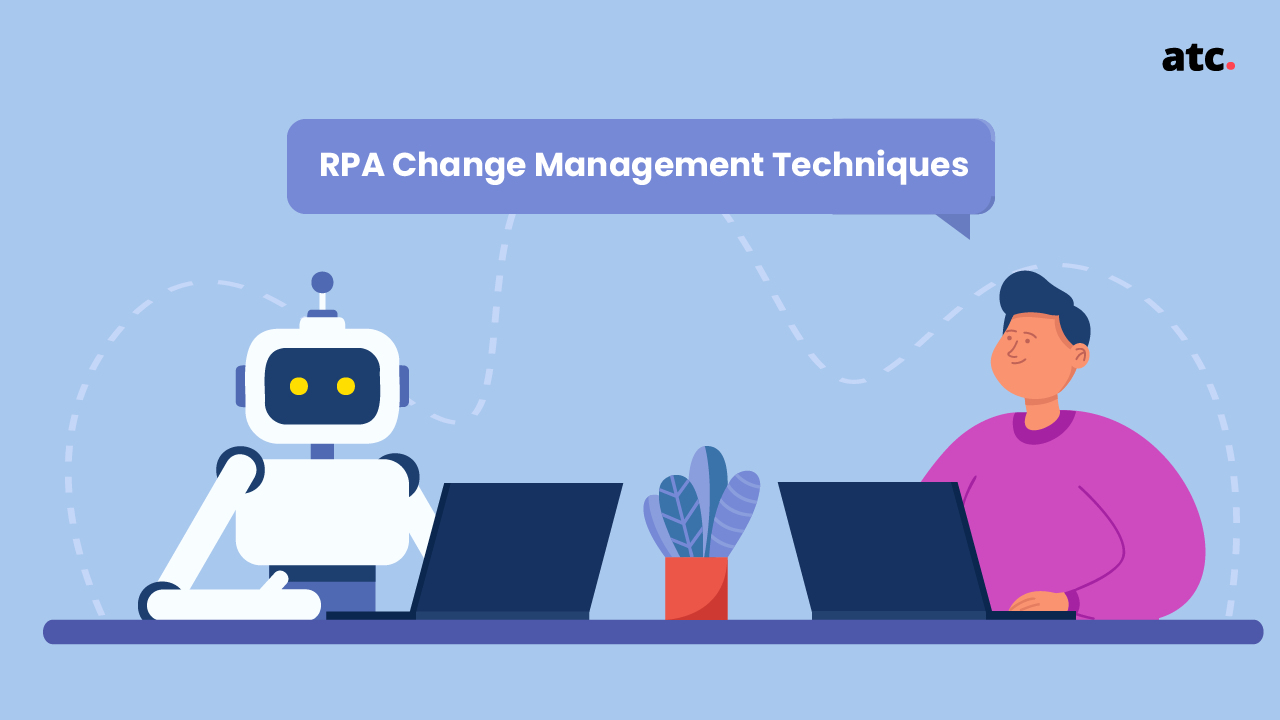Subscribe to the blog
Robotic Process Automation (RPA) for automation of repetitive work processes.
Enterprises have to reinvent their processes, sales channels, customer service, and overall culture to adapt to a new normal in a post-COVID world. Enterprises of today need to be innovative, agile, and resilient to remain competitive in the market. The pandemic has led enterprises to fast forward their digitization efforts to ensure business continuity and remain relevant to their customers.
As enterprises digitize their value chain, they need to minimize human intervention to ensure that businesses run uninterruptedly, even in the face of disruptions similar to COVID-19. Robotic process automation (RPA), one of the key building blocks of digitization efforts, has become a priority. According to a Deloitte survey, 53% of enterprises have already started their RPA journey, which will increase to 72% by 2022, and RPA will achieve universal adoption by 2025.
RPA helps automate repetitive work processes across industries and assists enterprises to improve productivity and efficiency, reduce costs, and enhance customer experience. RPA also improves employee experience by enabling them to focus on high-value tasks and reducing involvement in routine tasks.
What is Robotic Process Automation (RPA)?
Robotic Process Automation (RPA) is a software technology that helps automate repetitive digital tasks and processes, using robots or bots. Robots or bots are not humanoids or physical robots but software programs that emulate human interactions with digital systems. Simply put, RPA is a business process automation tool that enables anyone to define a set of rules for bots to perform tasks mimicking human-computer interactions.
What are the types of RPA robots or bots?
There are three types of RPA robots or bots, depending on how they operate within an enterprise
- Attended robots
Attended robots are similar to virtual or personal assistants that help users complete simple, repetitive tasks. You can use attended bots for front-office tasks, contact centers, field sales, and service engineers.
During a live customer call, a call center agent can use an attended bot in real-time to extract customer data from one application and automatically enter it into a second application. Thus, the attended bot helps agents to focus on high-value tasks of attending to customer problems by avoiding repetitive mundane tasks.
As the bots are to be triggered by humans, they are activated whenever they are required to assist with the process. Depending on the process, RPA bots will help you improve productivity, compliance and enhance customer experience.
- Unattended robots
Unattended robots work on a rule-based process and perform repetitive tasks with minimal human intervention. These bots typically perform batch operations and you can use them for back-office tasks such as intensive data processing, and documentation search and retrieval.
Unattended bots are either triggered by logic in the processor operating on a predefined schedule. Unattended robots will help you reduce operating costs, and improve compliance.
- Hybrid robots
Hybrid robots are a combination of attended and unattended robots and are used to automate tasks that cannot be done with only one type of robot. You have processes that include steps that can be automated with attended bots and the remaining steps that can benefit from unattended bots. Hybrid bots help you automate end-to-end processes such as application processing, service delivery, employee onboarding, and so on. Hybrid bots work alongside humans to ensure that tasks are completed efficiently.
What are the benefits of RPA?
RPA helps your business processes become efficient, accurate, intelligent, and compliant. According to a Deloitte survey, 92% of the respondents have mentioned improved compliance as one of the benefits of automation. About 92% of respondents reported improved quality/accuracy, with 90% experiencing improved productivity, and 59% realizing cost reduction benefits.
Source: Deloitte
The top benefits of Robotic Process Automation (RPA) are:
- Compliance
The volume of regulations and data compliance has increased substantially with the rise in data volume. RPA helps enterprises in compliance management across business functions, from IT operations to front and back office. Robots ensure enterprise compliance to regulations daily and maintain a proper audit trail.
Additionally, automation helps reduce human contact with sensitive data eliminating the risk of fraud and compliance issues.
- Accuracy/Quality
RPA robots are accurate and provide high-quality results with consistency and regulatory compliance. Even with the increase in work volume, quality/accuracy is not impacted, unlike humans where the probability of error increases as their workload increases.
- Improves Efficiency
RPA bots work round the clock and all 365 days a year without any break. Most importantly, bots work with high consistency and accuracy which improves the quality of outcomes. The speed of execution and quality thus improve process efficiency.
- Improves Productivity
RPA bots automate repetitive manual tasks freeing your employees’ time for high value-added work. With the help of bots, employees can complete a process in less time, leading to higher productivity. Additionally, an employee creates more value for the organization by paying more attention to high-value activities.
The bot completes a process with higher accuracy eliminating human errors, which further enhances productivity by saving the time required to rectify the errors.
- Cost savings
Automation of work processes helps you save labor costs by reducing the manual efforts required to complete an activity. The payback time for RPA implementation can range from six months to a year.
The high accuracy of bots helps your organization save cost by eliminating the cumulative effect of errors on subsequent processes and saving time in error rectification.
- Enhances scalability
RPA solutions are lean and can be quickly deployed. The solutions are flexible and can be quickly adopted to process changes or adhere to new requirements. The flexibility enables the solution to be scaled up or down based on demand.
- Ensures Business Continuity
With RPA bots operating at all times of the year without manual intervention ensures business continuity even in the face of disruptions such as the COVID-19 pandemic. To future-proof their businesses from the impact of similar disruption, enterprises have broadened the scope of automation to ensure business continuity in all situations.
- Enhances Customer Experience
With the elimination of repetitive tasks, employees can focus more on attending to customers and solving their problems. This helps improve service levels and enhances customer experiences.
Eliminating costly errors with highly accurate RPA bots helps improve customer satisfaction levels.
- Analytics for process improvisation
With higher automation, enterprises can collect more data about their work processes such as work volume patterns, errors, exceptions, etc. The analysis of the data will provide insights into the organization for process improvement initiatives.
What are the use cases of RPA?
The common use cases for RPA solutions are repetitive, rule-based functions or data-intensive processes with defined, logic-based outcomes. You can use basic criteria to determine the suitability of business processes for automation; however, a detailed process analysis will be required to make a definitive conclusion.
The process must be rule-based with repetitions at regular intervals or pre-defined triggers to initiate it. The process should have defined inputs and outputs and have sufficient volume to justify investments in automation. The business process suitable for automation can be classified based on function.
- IT Operations and Management
RPA bots can automate repetitive human activities within and across IT processes. RPA solutions help automate both data and process flow at a granular level to enable inter-application data and process integration. RPA thus augments an organization’s IT capability by creating a digital workforce.
Source: NICE
Service resolutions
The IT support team receives service requests that are repetitive and simple with predefined steps to be followed for their resolution. RPA bots, also called virtual IT support executives, can attend to such requests relieving the team and letting them attend to higher priority or more complex tasks. Some of the service requests such as password resets, mailbox management, account creations, and others can be performed by a bot.
Data backup and patch management
These are routine, repetitive tasks that can be automated with RPA technology, and employees who are manually performing the tasks can be freed to focus on other high-priority tasks.
There are other processes within the IT department that can be efficiently managed by RPA bots - a single-click installation of complex systems, software testing and quality management, data migration, networking support, and other activities, which can be derived after a detailed analysis of your IT organization.
- Finance and Accounts
Finance is an information-intensive function which primarily deals in data providing a lot of scope for automation. Payables and Receivables are two repetitive manual tasks that require skilled resources. Gartner had predicted that RPA would become mainstream in finance. Some of the key processes that can be automated in finance are:
Quote-to-cash
quote-to-cash automation will help provide fast services and reduce error rates along with the obvious benefit of cost reduction. The automation requires document understanding and moving data across applications such as ERP, order management systems.
Procure-to-pay (p2p)
Procure-to-pay (p2p) is a data-intensive process whose automation involves extracting data from multiple systems. The automation will help reduce the repetitive manual task of data extraction and enable employees to focus on value-added activities.
Invoice creation and delivery can use bots to replace manual data replication thus saving time and improving accuracy. Similarly, financial planning and bank statement reconciliation are other finance processes that are fit for automation.
- Human Resources
Payroll Automation
Payroll processing is a rule-based, repetitive activity that needs to conform to regulations. Some of the enterprises continue to rely on legacy systems and they can benefit by deploying RPA bot in their payroll processing. An UiPath RPA implementation for payroll processing resulted in 85% faster processing and zero-error rates.
Employee Onboarding
COVID-19 has accelerated the adoption of RPA solutions for employee onboarding. With remote hiring and work from home (WFH), employee onboarding with the RPA bot is an addition to the virtual work environment.
- Marketing and Sales
Customer onboarding, especially in a consumer company, impacts the customer experience. The process can be automated using cognitive automation for a smooth onboarding.
Sales personnel spend a lot of time updating customer information in CRM applications. Even as applications are available to integrate email, call, and communication data to CRM, you can create an RPA to update your CRM application with customer information.
In addition to functional process automations, each industry vertical and sub-vertical will have specific processes unique to their business that can be automated.
What are the steps in RPA implementation?
Robotic process automation implementation requires a structured methodology to ensure success and get the intended benefits. There are four main steps or stages in any RPA implementation project.
- Process assessment
As all business processes are not suitable for robotic process automation, you need to do a thorough assessment of processes within and across business functions or departments. An enterprise needs to have a methodology or framework to judiciously select the process that fits the automation criteria and aligns with the organization's future operating model, and automation journey.
Some of the key factors that you need to consider are transaction volume, human resources intensity, process constraint, data compliance, technical feasibility, cost-effectiveness, and other process-dependent factors.
- Business case development
After you create a high-level list of processes that can be automated, you conduct a detailed analysis to create a business case for automation. The time for payback or the return on investments (ROI) is calculated to determine the commercial feasibility of the specific process automation. You also determine the RPA bot metrics that will be used to assess automation success in the future. Last but not the least, you evaluate the impact of process automation on people, culture, and alignment with company strategy.
- RPA planning and preparation
Assess the best operating model for your organization. Prepare a detailed project plan that includes team planning and whether internal resources or external resources will be used. Assess automation vendors to identify and select the best platform for your business vertical and process automation needs. If you are planning to use an external service provider, then you plan your sourcing and vendor strategy as well.
- RPA implementation and testing
You begin the development process based on the RPA workflows generated. The developers create automated scripts and program code using the selected automation platforms. Testing is conducted to ensure the error-free performance of the bot in all possible scenarios for the process.
How does Artificial Intelligence (AI) complement Robotic Process Automation (RPA)?
RPA and Artificial Intelligence (AI) have gained a lot of prominence in recent years for their abilities to improve efficiency, productivity, and quality and enhance customer experience. However, there is confusion over similarities and differences between the two technologies and how an enterprise can leverage them in isolation or in tandem to achieve its digitization objectives.
RPA and Artificial Intelligence are complementary sets of technologies but are two ends of Intelligent Automation. RPA creates a software program (robot or bot) that emulates human actions. Artificial Intelligence is a set of technologies that are meant to emulate human intelligence. RPA technologies, because of replicating human actions, use structured inputs and logic. In contrast, AI uses unstructured inputs and develops its own logic.
AI complements RPA technologies that replicate rules-based human actions with predefined inputs and outputs. It can be said that AI adds intelligence to the automated mechanical tasks executed by an RPA bot. Since any enterprise will have both structured and unstructured data, so many processes will require both RPA and AI technology to work together to fully automate a process end-to-end.
End-to-end automation is key to enterprise efforts to provide self-service options to their internal audience as well as external customers for enhanced user experience. Whether a customer is opening a new bank account online or an employee using self-service options to enroll in a development program, a fully automated process combining RPA and AI results in satisfied customers and employees. The fully automated process also helps organizations save costs.
RPA and AI together help you to expand the scope of automation into new areas and enable you to automate more complex tasks which otherwise would not have been feasible.
How can we help?
Robotic Process Automation (RPA) helps enterprises create an agile digital workforce that helps improve efficiency, productivity, and quality, reduce cost and enhance customer experience. The automation of repetitive manual tasks frees human resources to focus on more value-added tasks, thereby enhancing employee engagement and experience.
A successful RPA implementation requires careful analysis and identification of tasks that can be automated. A fully automated process also requires complementary Artificial Intelligence technologies and competencies.
If you are planning to embark on an automation journey, then our RPA and AI specialists can help you identify the right process, methodology, and platforms. Our consultative approach combined with technical expertise will help you strategize, plan and implement an automation agenda. You can get in touch to start a conversation about driving your digital transformation initiatives with Robotic Process Automation (RPA).




